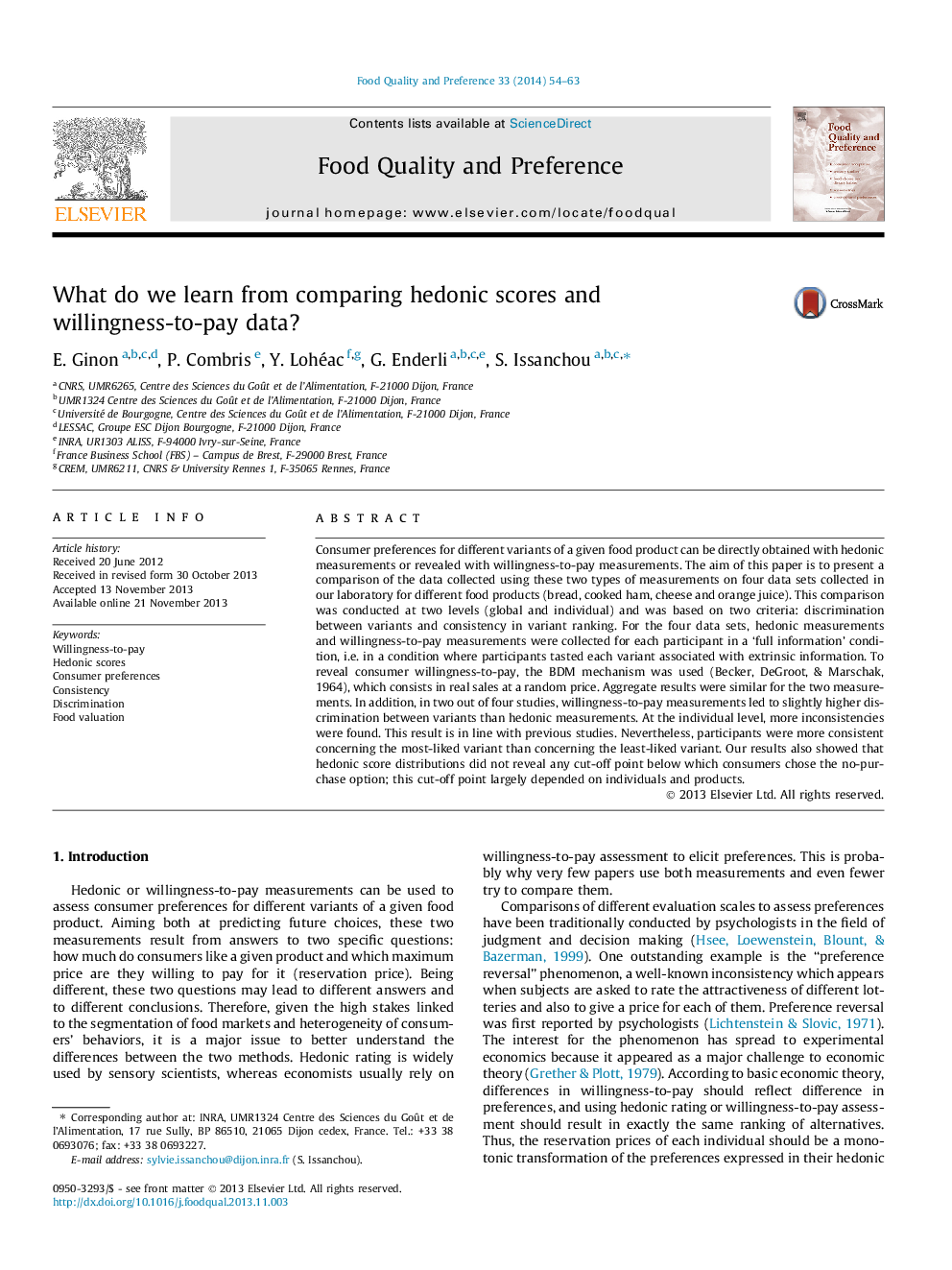| کد مقاله | کد نشریه | سال انتشار | مقاله انگلیسی | نسخه تمام متن |
|---|---|---|---|---|
| 4317130 | 1613164 | 2014 | 10 صفحه PDF | دانلود رایگان |
• We compare consumer hedonic scores to their willingness-to-pay from four studies.
• At the group level, discrimination is similar for the two types of measurements.
• At the group level, hedonic scores are consistent with willingness-to-pay.
• The two types of measurements generate different individual rankings.
Consumer preferences for different variants of a given food product can be directly obtained with hedonic measurements or revealed with willingness-to-pay measurements. The aim of this paper is to present a comparison of the data collected using these two types of measurements on four data sets collected in our laboratory for different food products (bread, cooked ham, cheese and orange juice). This comparison was conducted at two levels (global and individual) and was based on two criteria: discrimination between variants and consistency in variant ranking. For the four data sets, hedonic measurements and willingness-to-pay measurements were collected for each participant in a ‘full information’ condition, i.e. in a condition where participants tasted each variant associated with extrinsic information. To reveal consumer willingness-to-pay, the BDM mechanism was used (Becker, DeGroot, & Marschak, 1964), which consists in real sales at a random price. Aggregate results were similar for the two measurements. In addition, in two out of four studies, willingness-to-pay measurements led to slightly higher discrimination between variants than hedonic measurements. At the individual level, more inconsistencies were found. This result is in line with previous studies. Nevertheless, participants were more consistent concerning the most-liked variant than concerning the least-liked variant. Our results also showed that hedonic score distributions did not reveal any cut-off point below which consumers chose the no-purchase option; this cut-off point largely depended on individuals and products.
Journal: Food Quality and Preference - Volume 33, April 2014, Pages 54–63
